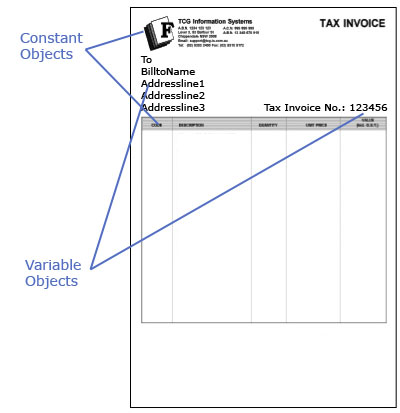|
The Base page is used as a template for each new
page and contains data common to all pages. Data
included on the Base page is typically that which
identifies the document, and appears on every page of
the output.
The figure below shows a sample Base page. It
contains both constant objects (objects that always
appear the same when printed) and variable objects
(objects that obtain their value from the data). The
logo and heading are constant objects while the address
and the date fields are variable text objects. When the
form prints, the same logo and heading will appear at
the top of each printed page. However, the address and
invoice number are extracted from the data and will change with
each new document.

When you create a blank form in FTDesign, you
automatically start on the Base page.
To define the properties of the Base page:
|
|



